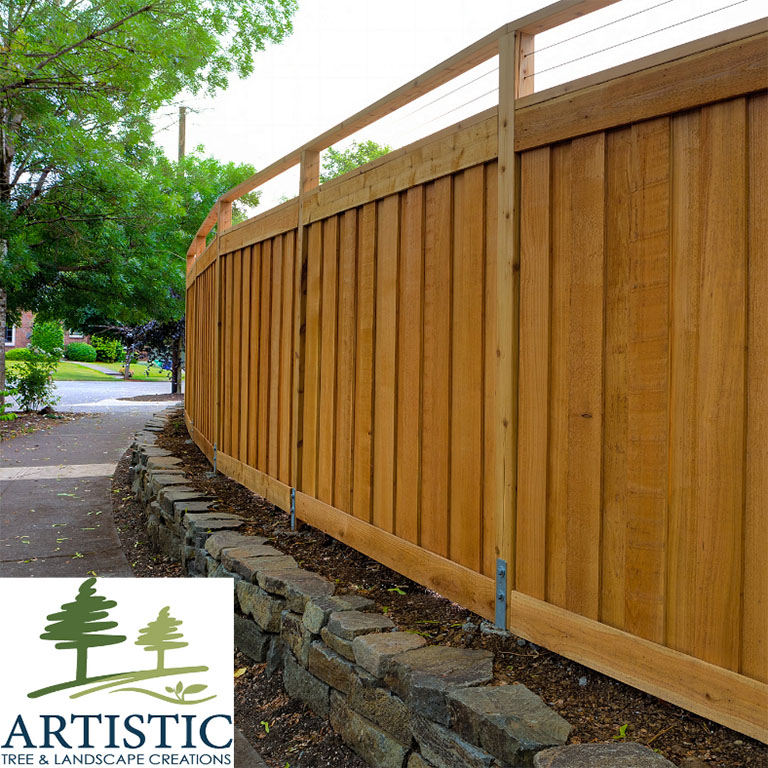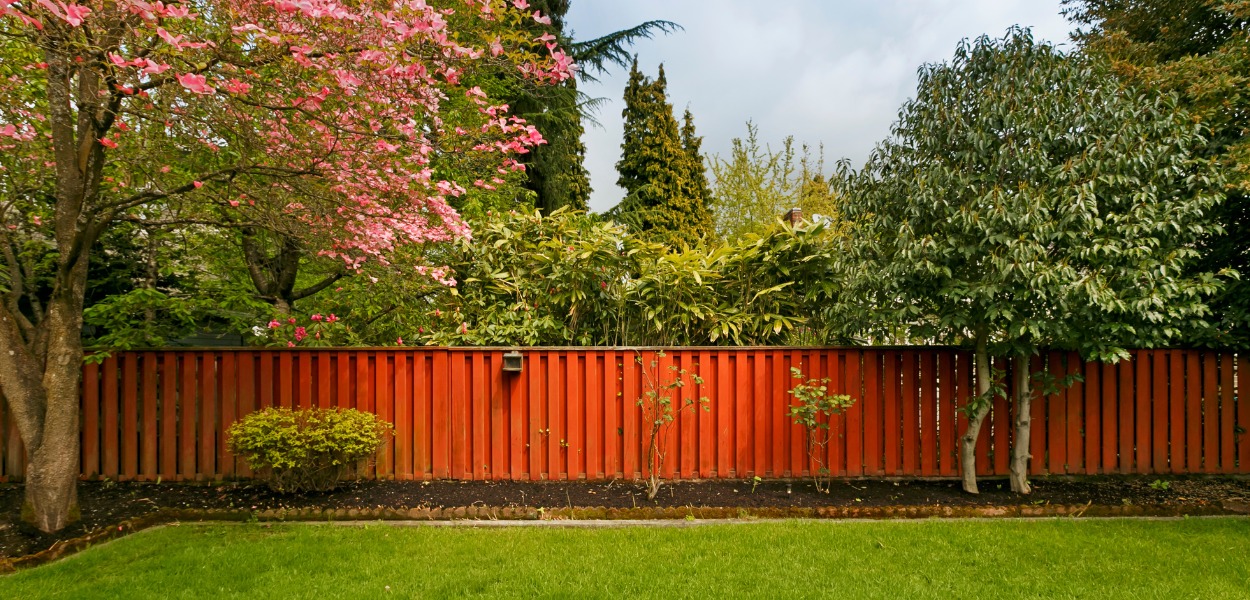All Categories
Featured
Fencings play a crucial function in giving personal privacy, security, and enhancing the aesthetic allure of your residential property. Nonetheless, consistent exposure to the elements can bring about damage. From hefty rainfall and snow to extreme sun and wind, weather-related damages is one of one of the most usual causes of fence damage. While you can't manage the weather, there are a number of means to safeguard your fence from the harmful impacts of climate and ensure it lasts for many years ahead.
Wood Fences: While wood fences are a classic choice, they are extremely susceptible to dampness and insects. To make a timber fencing more durable, choose for pressure-treated lumber, cedar, or redwood. These materials are extra resistant to rot and bugs. Nevertheless, you'll still need to safeguard the timber from the elements with regular maintenance.
Plastic Fences: Vinyl fences are highly resilient and require little upkeep. They are resistant to fading, splitting, and bending, making them perfect for regions that experience severe sunlight, rain, or winter. Vinyl also won't rot or draw in parasites, supplying long-term security without the demand for continuous maintenance.
Metal Fencings: Wrought iron and aluminum fencings are outstanding choices for their stamina and resistance to wind and moisture. They are susceptible to rusting over time, especially if subjected to frequent rains or humidity. Go with galvanized or powder-coated steel fencings to lessen the threat of corrosion.
![]()
Composite Fences: Integrating wood fibers and plastic, composite fencings are resistant to decomposing, fading, and bug damages. They offer the look of wood with less upkeep, making them an optimal option for locations with variable climate condition.
![]()
Wooden Fencings: A great quality timber sealer or stain is important to safeguard your fencing from the aspects. Timber sealers block wetness and shield against mold and mildew growth. They likewise protect against UV damages that can trigger fading and splitting. Make certain to reapply the finishing every pair of years to keep your surround top problem.
Vinyl Fences: While vinyl is low-maintenance, you can still secure it better by using a UV protectant. These layers aid stop staining triggered by prolonged sun exposure. Furthermore, utilize vinyl-specific cleaners to maintain the surface area complimentary of stains or dirt buildup.
Steel Fencings: To safeguard metal fences from rust and corrosion, consider applying a rust-inhibiting primer followed by a protective paint designed for exterior usage. Ideally, powder coating supplies a sturdy and long-lasting finish that can hold up against harsh climate.
Wooden Fences: Tidy your wooden fence with a pressure washing machine or a soft cloth and light cleaning agent. Make certain to remove fallen leaves, mold and mildew, and dust that can hold dampness versus the wood. Examine the fence routinely for indicators of rot, splits, or insect invasions. Early detection can protect against small troubles from becoming expensive repairs.
Vinyl Fences: Plastic fencings are very easy to clean with soap and water. For tougher discolorations, you can utilize a moderate bleach solution or a vinyl cleaner to restore the fencing's appearance. Do not neglect to inspect for any type of fractures that might let water in, bring about additional damages.
Metal Fencings: Clean metal fencings with a soft fabric to eliminate rust, dirt, and dirt. If you observe rust places, remove them quickly with a cord brush and deal with the location with a rust-resistant primer or paint to stop it from spreading out.
Wood Fencings: When installing wooden fence articles, make certain they are set deeply into the ground, ideally below the frost line to avoid moving throughout freezing temperatures. Use concrete to protect the blog posts and prevent them from being or leaning rooted out by strong winds.
Steel Fences: For steel fences, ensure that the posts are securely secured in concrete. This is especially essential in regions with constant tornados or heavy winds. You might additionally intend to set up added bracing to provide added assistance versus wind stress.
Additionally, extreme wetness from close-by plants can lead to mold and mildew and rot in wood fencings, so maintain plant life at a risk-free range to enable for proper air movement and water drainage.
Metal fencings must be examined for rust before the wintertime season starts, and any kind of affected locations must be treated with rust-resistant products. Furthermore, applying a layer of paint or protective finishing prior to the chilly climate sets in can aid secure your fencing from ice and snow damage.
![]()
Verdict. Securing your fencing from weather-related damages calls for a mix of appropriate product option, normal maintenance, and positive care. Whether you have a wooden, plastic, steel, or composite fence, the right safety steps can prolong its life-span and keep its look. By complying with these basic yet effective actions, you can secure your fence versus the elements and keep it looking wonderful for several years ahead.
- Choose Weather-Resistant Products. Among one of the most effective methods to safeguard your fencing is by picking the best product for your environment. Specific products are extra resilient and better fit to withstand certain climate condition.
Wood Fences: While wood fences are a classic choice, they are extremely susceptible to dampness and insects. To make a timber fencing more durable, choose for pressure-treated lumber, cedar, or redwood. These materials are extra resistant to rot and bugs. Nevertheless, you'll still need to safeguard the timber from the elements with regular maintenance.
Plastic Fences: Vinyl fences are highly resilient and require little upkeep. They are resistant to fading, splitting, and bending, making them perfect for regions that experience severe sunlight, rain, or winter. Vinyl also won't rot or draw in parasites, supplying long-term security without the demand for continuous maintenance.
Metal Fencings: Wrought iron and aluminum fencings are outstanding choices for their stamina and resistance to wind and moisture. They are susceptible to rusting over time, especially if subjected to frequent rains or humidity. Go with galvanized or powder-coated steel fencings to lessen the threat of corrosion.

Composite Fences: Integrating wood fibers and plastic, composite fencings are resistant to decomposing, fading, and bug damages. They offer the look of wood with less upkeep, making them an optimal option for locations with variable climate condition.
- Apply Safety Coatings. Regardless of the product, applying safety coatings is vital in prolonging the life of your fencing. Coatings form an obstacle that shields your fence from wetness, UV rays, and other ecological stressors.

Wooden Fencings: A great quality timber sealer or stain is important to safeguard your fencing from the aspects. Timber sealers block wetness and shield against mold and mildew growth. They likewise protect against UV damages that can trigger fading and splitting. Make certain to reapply the finishing every pair of years to keep your surround top problem.
Vinyl Fences: While vinyl is low-maintenance, you can still secure it better by using a UV protectant. These layers aid stop staining triggered by prolonged sun exposure. Furthermore, utilize vinyl-specific cleaners to maintain the surface area complimentary of stains or dirt buildup.
Steel Fencings: To safeguard metal fences from rust and corrosion, consider applying a rust-inhibiting primer followed by a protective paint designed for exterior usage. Ideally, powder coating supplies a sturdy and long-lasting finish that can hold up against harsh climate.
- Regular Cleansing and Inspections. Proper cleaning and regular evaluations are necessary to keeping the stability of your fence. Build-up of dust, debris, and mold and mildew can catch dampness against your fencing and trigger long-lasting damage.
Wooden Fences: Tidy your wooden fence with a pressure washing machine or a soft cloth and light cleaning agent. Make certain to remove fallen leaves, mold and mildew, and dust that can hold dampness versus the wood. Examine the fence routinely for indicators of rot, splits, or insect invasions. Early detection can protect against small troubles from becoming expensive repairs.
Vinyl Fences: Plastic fencings are very easy to clean with soap and water. For tougher discolorations, you can utilize a moderate bleach solution or a vinyl cleaner to restore the fencing's appearance. Do not neglect to inspect for any type of fractures that might let water in, bring about additional damages.
Metal Fencings: Clean metal fencings with a soft fabric to eliminate rust, dirt, and dirt. If you observe rust places, remove them quickly with a cord brush and deal with the location with a rust-resistant primer or paint to stop it from spreading out.
- Strengthen Your Fence with Appropriate Setup. Correct installment is one of the most efficient ways to avoid weather-related damages. A fencing that is badly mounted is more probable to collapse or suffer damages during tornados.
Wood Fencings: When installing wooden fence articles, make certain they are set deeply into the ground, ideally below the frost line to avoid moving throughout freezing temperatures. Use concrete to protect the blog posts and prevent them from being or leaning rooted out by strong winds.
Steel Fences: For steel fences, ensure that the posts are securely secured in concrete. This is especially essential in regions with constant tornados or heavy winds. You might additionally intend to set up added bracing to provide added assistance versus wind stress.
- Trim Trees and Bushes Near Your Fence. Disordered trees and hedges can create substantial damage to your fencing, especially during high winds or hefty storms. Tree branches can scuff versus the fence, triggering scratches, and their roots can undercut the blog posts. Keep vegetation cut and ensure that tree branches are not leaning on or near the fence.
Additionally, extreme wetness from close-by plants can lead to mold and mildew and rot in wood fencings, so maintain plant life at a risk-free range to enable for proper air movement and water drainage.
- Winterize Your Fence. If you reside in an area with harsh winters months, take added precautions to protect your fencing from freezing temperature levels, snow, and ice. For wooden fencings, see to it the base of the messages is raised over ground degree to stay clear of water build-up, which can crack the timber and freeze. Take into consideration utilizing a dampness barrier around the base of the blog posts to keep them completely dry during the winter season months.
Metal fencings must be examined for rust before the wintertime season starts, and any kind of affected locations must be treated with rust-resistant products. Furthermore, applying a layer of paint or protective finishing prior to the chilly climate sets in can aid secure your fencing from ice and snow damage.
- Post-Storm Services. Tornados can trigger prompt damages to your fence, consisting of fallen branches, damaged posts, or dislodged panels. After each tornado, evaluate your fence completely to examine for any type of visible damage. Address minor issues quickly before they come to be larger, extra pricey fixings. It's a great concept to get in touch with a professional for repairs to guarantee it stays structurally sound. if your fencing has actually been drastically damaged.

Verdict. Securing your fencing from weather-related damages calls for a mix of appropriate product option, normal maintenance, and positive care. Whether you have a wooden, plastic, steel, or composite fence, the right safety steps can prolong its life-span and keep its look. By complying with these basic yet effective actions, you can secure your fence versus the elements and keep it looking wonderful for several years ahead.
Latest Posts
Specialist Commercial Roofing Solutions in North Platte, Nebraska
Published en
2 min read
Find Affordable Auto Repairs with Montclare’s Limited-Time Service Specials
Published en
1 min read
Boost Your Home's Exterior with Weathercraft's Home siding Solutions
Published en
1 min read
More
Latest Posts
Specialist Commercial Roofing Solutions in North Platte, Nebraska
Published May 27, 25
2 min read
Find Affordable Auto Repairs with Montclare’s Limited-Time Service Specials
Published May 26, 25
1 min read
Boost Your Home's Exterior with Weathercraft's Home siding Solutions
Published May 25, 25
1 min read